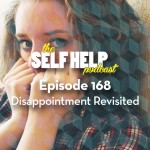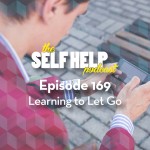Letting Go
A listener Judy messaged in…”Please can you help with ideas for how I can try teaching my 7-year old child about letting go? She is very sentimental about some items and memories, which become a focus for sadness. I would love to be able to help her resolve these feelings, instead of them piling up in her.”
This, in many ways takes us back to last weeks blog and our old friend ‘attachment’ which, positively, creates security, and safety but also negatively creates loss and bereavement.
It is often said that children having pets is a way of teaching them about care and nurture but also about loss, bereavement and death.
Do we need to let go?
Memory is the part of the mind that connects us to the past, to what was. This is a normal and good thing. Memory tells us who we are, where we live, who our family is. Memory is the basis of learning that is passed from one generation to the next. In many ways memory is evolution.
Attachment
Attachment is glue. It is emotional glue that connects us to the past. Some glued attachments we may see as positive. We visit our father’s grave and feel the positive wave of attached energy that allows us to celebrate him and our relationship. When we have negative emotional glue we cannot let go of what was. The problem is that we then tend to live the past in the present. This is the basis on emotional depression – the continual rumination of unresolved past events.
What do we teach our children?
Judy’s message is about her 7 year old child and her ability to let go.
Where do children learn behaviour?
The main way that we all learn about how the world works and our place in it is through observation. We observe our parents, siblings, friends, society culture and so on, and each give us a bit of information that we included in our sense of self and our sense of who we are.
Our responsibility as a parent
Have you ever had the experience when you hear yourself saying something that your parent said? When you hear yourself saying it you are taken back to what is was like to hear that when you were a child. I know that there have been times when I have heard my own parents coming out of my mouth and I have wanted to cut my tongue out. Such is the nature of the emotional programming that we get from our parents but also the emotional programming that we pass to our children.
So a child, your children, learn to let go from observing you, from observing your behaviour and how you deal with letting go. If you are relaxed and easy, so are they. If you are uptight and angry, so are they.
The quickest way to change the responses in other people is to change yourself
If you observe your child responding in ways that you do not feel are right or appropriate, the question that you should ask yourself is “where did they learn that?” If they learned it from you then you need to change your responses to what you would like to see reflected in your child’s behaviour.
If you see the source of their learning, the response that they have another person’s responses, you may feel able to address this with them. If not you need to consider how you can counteract or diminish the effect of this observed behaviour.
Most importantly, when we give our children the negative gift of not being able to let go, we are creating people who are open to being stunted in their growth, held back by the unresolved past, and ultimately subject to depression. When we teach our children that it is okay to let go we create children who can face the future positively, who do not allow the past to hold them back and who can move forward positively and face the challenges that life throws at them.
If you look at your children and see them having insecurities about letting go and you can see that they have developed this behaviour from observing you and the way that you respond, then, the best thing that you can do for them is to go into therapy yourself so that as you change and resolve your issues, then your children can learn to be different, to have different responses.
Life long learning is open to us all if we choose to take it!
Take care, be happy, and allow yourself and your children to grow through learning – never stop learning.
Sean X



Trackbacks & Pingbacks
[…] Sean wrote a blog post on this subject. Have a read… […]
Leave a Reply
Want to join the discussion?Feel free to contribute!